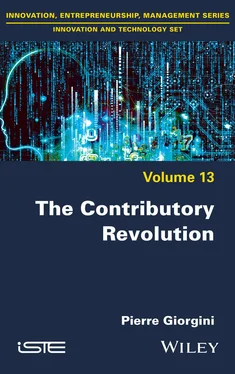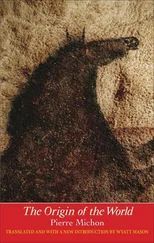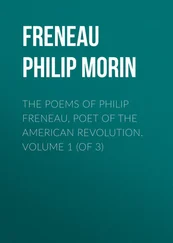From a structural point of view, there are two opposing conceptions. On the one hand, the corpuscular or atomistic conceptions (in entities, in places, in identified objects with minimal stability, with a membrane, with a well-differentiated inside and outside) and, on the other hand, the tissue conceptions, diffuse, non-localized or structures of links (vibrations, energy, waves). The notions of scale and the position of the intervening party creating the “way of observing” the system, as well as the way in which someone intervenes in the system, apply across these dualities.
A new duality then arises according to whether the intervening party is an entity that is exogenous or endogenous to the system and whether they contribute to the system from within it (endo-contributive – ENC) or distribute their actions and artifacts from outside of it (exo-distributive – EXD). It will be seen that the relationship of the intervening party with a corpuscular design system can be endo-contributive or exo-distributive, or even a combination of the two depending on the scale, whereas in the case of fully tissue-based, diffuse designs, it can only be endo-contributive, itself not being confined to a compact entity. It is possible to generalize these principles by considering the intervening party in a broad sense: human, technical system, biological, artificial intelligence, organization, formalism.
So, in summary, in the first case, a particular entity external to the system produces and distributes its contributions to the global system (exo-distributive), whereas in the second case, each entity of the system, reduced to an ephemeral density of links for the tissue conception, produces its contributions and, through their networking, globally contributes to the functioning of the whole (endo-contributive). This duality is also observable for the activity of “intelligence” production whose contribution to the system is an activity of analysis, data storage, decisions, coordination or calculation. In the distributive case, “intelligence” is concentrated in an external centralized entity, and then the results or decisions are distributed or give rise to organized coordination from a central point. In the contributory case, the intelligence is distributed in the system and it is its networking that creates an intelligence of the complex system. This migration towards intelligence produced in a more contributory and shared way, less centralized and distributive, is concretely translated in all the observable mutations of organizations, including that of democratic intelligence (co-elaborative democracy). We will see that the epistemological migration that we are experiencing (the change of episteme as understood by Michel Foucault (1966)) makes us migrate from a dominant conception where the place (status, place, etc.) prevails and determines the network of links, to conceptions where it is the structure of links that determines the conception of places.
1.1. Examples to illustrate the ongoing transition
1.1.1. Intelligent textiles
We could imagine a network of pearls linked together by multiple threads of the same color, constituting a system, and a fabric of threads, some of which, very densely crossed, would form balls. From a distance, the two structures might look identical but, up close, the way of perceiving would be different. In intelligent fabrics, the different structures will be found again and again. The first generation consisted of integrating a processor or “intelligent pearl” into the fabric, distributing its input to a multitude of processors distributed in the form of “pearls” woven together. The new generation, based on nanotechnologies, is made up of nanowires. It is then a fabric whose processors are diffused and in the form of nanowires woven into “intelligent” structures.
1.1.2. From the solar system to the infinitely small
The “way of observing” the solar system, from the infinitely large to the infinitely small and vice versa, is a beautiful illustration of these dualities. At the scale of a theoretical observer external to the solar system, in the Newtonian vision, we consider a network of compact and autonomous masses from the point of view of their own structure: planets, stars, meteorites, etc.
Through the exertion of gravitational forces, they are in global interaction and in permanent movement. The links are made by various interactions: mechanical impacts and shock waves, electromagnetic forces, gravitational forces and heat. In this conception, the Earth is perceived as a compact and homogeneous sphere with its own structure and autonomy, subject to the gravitational forces of the whole. When one changes scale, the design moves and the Earth itself becomes a system of interacting entities. And so on: as we change scale from the largest to the smallest, we end up with a system of molecules, themselves systems of particles (atoms), and this quest for the single elementary particle in the composition of everything becomes an endless quest (atomic vision). In the end, we arrive at the quantum structure of matter and the corpuscle/wave duality to which we will return. This duality, which has been reconciled on the formal level by wave mechanics, has led to relativism regarding what reality really is. We are faced with two conceptions and therefore two “ways of observing” without either one or the other being able to claim to be more in line with the reality of the real than the other. The way of observing somehow creates the intelligibility of the object and thus creates the object, in particular when it is too small or too big to be tackled by the sensory experience of a human being. These are conceptions. They are more or less practical on the conceptual level, i.e. more or less manipulable by mathematical equations which are available to us in order to characterize phenomena with the least possible uncertainty, according to the scale in question.
If we operate the opposite movement starting from the idea that an elementary mass does not exist as a stable, solid entity but is basically a network of waves of vibratory confined energies – as in string theory, for example – then the universe becomes an immense fabric of confined vibrations in global interaction. In the tissue conception, or here the vibratory conception, the human being is itself a network of confined vibratory energies and therefore cannot extract themselves from the global system as a stable and autonomous entity. This is the reason why the tissue conception is incompatible with the exo-distributive conception.
To illustrate these two types of system conception let us imagine a network of driverless cars, where each vehicle is devoid of intelligent decision-making capabilities (direction, speed, acceleration). These are externalized from the car network, centralized in a single computer, itself connected to all the cars by a set of radio frequencies. In order to operate the whole system, the computer must have a formal image (dynamic cartography) of the positioning map of all the vehicles, in real time, in its memory, and be instantly informed of events occurring in the environment of each vehicle. It will implement the network optimization algorithms by adapting the speed and trajectory of each vehicle to each situation. In the event of a serious problem, it will be able to stop all the vehicles at the same time, instantaneously.
It will remain the absolute master of the network. To do this, it will be necessary to build algorithms based on laws that model the overall operation and interworking of the vehicle network. The exclusion of humans as a singular intervener on board each vehicle, bringing intuition and emotion into the decision processes (speed, direction, etc.), will be indispensable for an algorithmic and deterministic modeling of traffic and consequent accident phenomena.
Читать дальше












